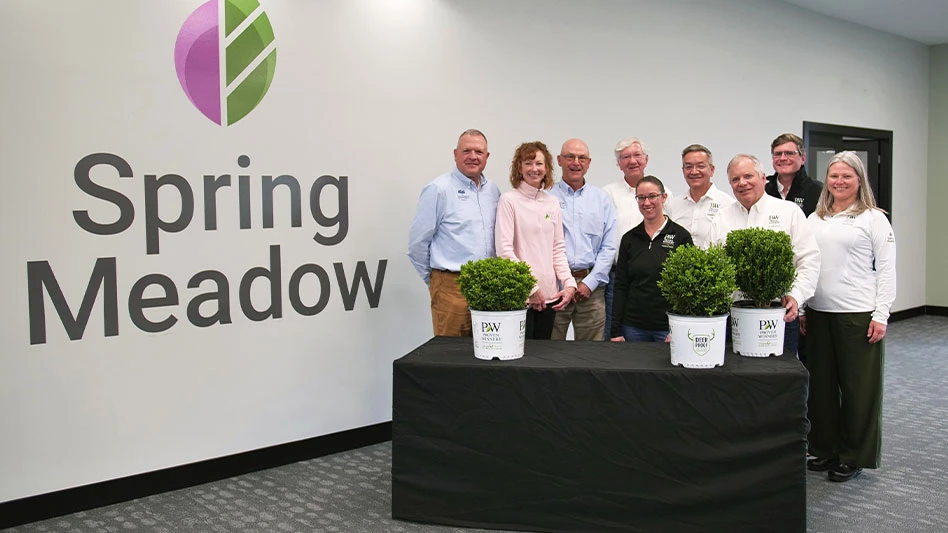
As awareness of invasive plants grows, consumers are seeking more information about what’s safe to plant in their landscapes. Whether they’re learning from cooperative extension offices or from less reliable sources like social media, the conversation around invasiveness is more prevalent than ever. Yet, even within the nursery industry, the topic is complex and nuanced—let alone for homeowners who may not have the horticultural knowledge to distinguish between aggressive spreaders and responsible selections.
Recognizing this challenge, Spring Meadow Nursery developed the InCheck™ program to help retailers, landscapers, and homeowners easily identify shrubs that are sterile, seedless, or non-invasive. Spring Meadow, the exclusive grower and licensee of Proven Winners® ColorChoice® shrubs in North America, created this initiative to provide clear, science-based guidance on plant selection while supporting retailers in addressing consumer concerns.
To make these varieties easy to identify, the InCheck designation appears on plant tags alongside the common name, assuring buyers of their responsible selection. Even in regions where a species isn’t invasive, many gardeners prefer sterile or seedless varieties to reduce maintenance. This program helps garden centers, landscapers, and municipalities promote sustainable, low-maintenance options.

Spring Meadow Nursery has long been at the forefront of developing improved plant selections, working closely with breeders across North America and beyond to bring innovative, environmentally responsible varieties to market. Many of the InCheck selections result from years of careful breeding to develop non-invasive alternatives to historically popular—but problematic—species.
Renowned breeder Dr. Tom Ranney at North Carolina State University has led the development of safer alternatives, including Kindly®, a seedless Japanese privet, and Fire Ball Seedless®, the first sterile burning bush. Dr. Ranney has introduced numerous other non-invasive cultivars, including two compact, seed-free barberry varieties, providing the same vibrant color without the risk of spreading.
The InCheck program currently includes 20 shrub varieties, all Proven Winners ColorChoice selections, spanning a range of species and landscape uses. Among them is the Lo & Behold® series of interspecific buddleia hybrids, which are permitted for sale in Oregon and Washington—two states with strict regulations on butterfly bush due to its invasive potential. These compact butterfly bushes produce little to no viable seed, making them a responsible choice for retailers and landscapers in regulated regions.
InCheck plants are backed by targeted marketing efforts designed to educate consumers and drive demand. Informational content, in-store signage, and digital campaigns help homeowners understand the benefits of these selections—ensuring that garden centers and wholesale growers have the tools they need to communicate effectively with their customers.

With programs like this, Spring Meadow Nursery continues its commitment to innovation and responsible plant selection, providing retailers with trusted varieties that meet the needs of today’s environmentally conscious consumers. As more homeowners look for sustainable, low-maintenance landscapes, Proven Winners ColorChoice Shrubs offers a simple, effective way to give them the confidence to plant responsibly—without compromising beauty or performance.

Explore the April 2025 Issue
Check out more from this issue and find your next story to read.
Latest from Nursery Management
- The HC Companies, Classic Home & Garden merge as Growscape
- Terra Nova releases new echinacea variety, 'Fringe Festival'
- Eason Horticultural Resources will now officially be known as EHR
- BioWorks receives EPA approval for new biological insecticide for thrips, aphids, whiteflies
- Ellen Mackenbach-Lakeman appointed new CEO of Dümmen Orange
- The Growth Industry Episode 3: Across the Pond with Neville Stein
- Southern Garden Tour sets 2025 dates for trial garden open houses
- New book explores plants that thrive in Rocky Mountains




